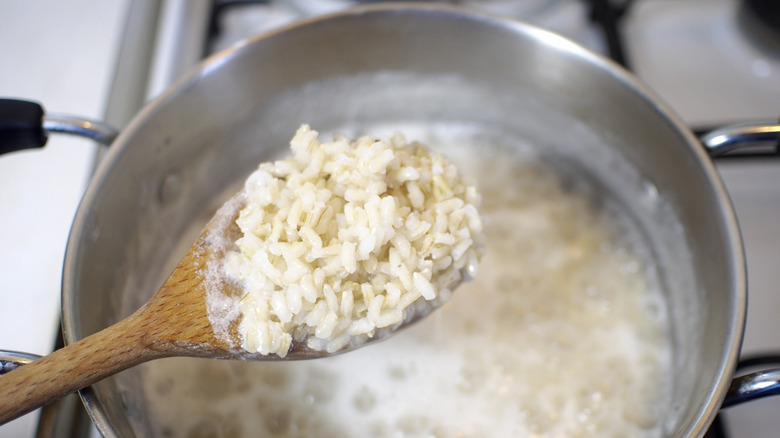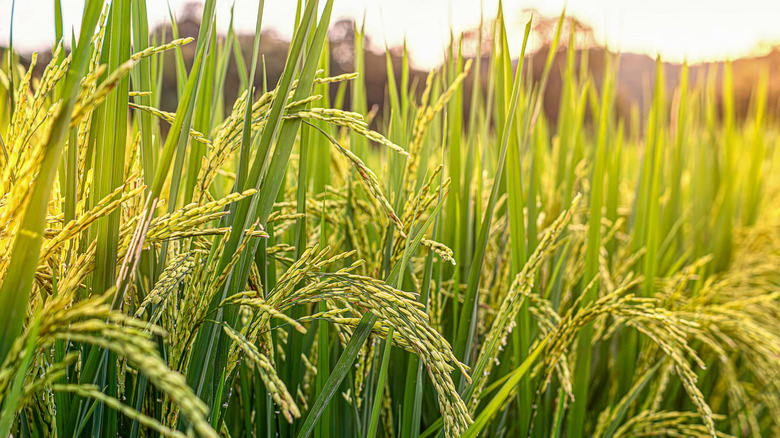Why Your Rice Keeps Boiling Over And How To Stop It
Rice, of any grain, feeds the world, as more than half of the world's population depends on it as a daily staple. So why is it that every time I go to make rice, the damned pot boils over, and suddenly my burner is covered in viscous, starchy rice juice?! Well, rice is covered in starches, even the healthier brown rice. When you boil rice grains the starches on the outside slough off the grains and into the water. Given that rice is already super starchy, the starch in the water forms bubbles. The bubbles are easily moved around by steam, and as the steam seeks to rise up and out of the pot, it takes the bubbles with them. Suddenly, you'll have a Mount Vesuvius-like eruption of starch water all over, well, everything. I hate nothing more than the hiss of starch water hitting my burners.
To stop this, there are two crucial steps you can take. Always rinse your rice. Always! We recommended it for idiot proof rice. Get a mesh strainer and run cold water through the rice for at least 30 seconds. As you do that, swiftly agitate the rice grains with your fingers. The other step to take is that once your water is boiling, and you add your rice, turn the heat to low. Let the rice simmer on low for a few minutes longer. Also, while you're at it, always flavor your water—we'd recommend pickle juice.
Sorry to report that rinsing doesn't affect arsenic levels
Rinsing your rice takes only about 30 seconds to one minute. But there is one persistent myth I encountered while writing this article: Rinsing your rice helps get rid of arsenic. Recently there have been some important studies about rice and heavy metals. Yeah, not exactly the combination of words you want to see, "rice" and "heavy metal." (Unless Slayer started throwing rice at their crowds, that would be acceptable, I guess.) But it's true. Of the 145 brands of rice tested, on average they all had 63 to 188 parts per billion of heavy metals, with the upper limit being about 240 parts per billion. There is no official limit of heavy metals in raw rice, but they do in rice cereals meant for kids. The most common heavy metal found was arsenic, followed by cadmium.
Heavy metals accumulate most in the outer bran of the rice, so white rice typically has lower levels compared to brown rice. There are new, recommended ways to cook rice that actually do get a lot of the arsenic out. Basically, you add your rice to boiling water for about five minutes, strain the rice, add new water to the pot, and then throw the rice back in when it's at temperature. Other studies have shown you can cook one cup of rice in six cups of water, and then toss all the water when you're done — essentially the pasta method. Both of these methods should also help with your rice boiling over, and as an added bonus you now have less arsenic to worry about.

